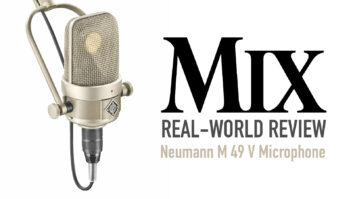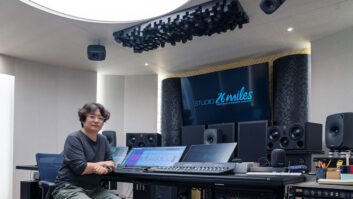
After 30-plus years in the business, I’ve caught the studio bug again. I’ve been building a small mix room for four months now and it’s almost done. The paint is dry, but I’m still playing with the acoustics, learning to trust how it sounds and even doing some mixes on a small laptop-based rig while I wait for a computer, balanced power units and interconnects. I’ll have gear from Lynx, Radial Engineering, Dangerous Music, Monster, Focal, Retro Instruments, Lindell Audio, Millennia, Steinberg, Avid, and some “vintage” hardware reverbs from Lexicon and AKG. On the digital side, I’ll have plug-ins from Universal Audio, SoundToys, Vienna Instruments and many more. It’s going to be a hybrid analog summing and in-the-box combo mix room, all run on a rackmounted PC from Rain Computers that’s more than 30-percent faster (and way less-expensive) than anything currently offered by Apple.
If you’re an audio-head, it’s easy to find studios attractive—even addictive. I first got interested in the ’70s after I moved to L.A. with the intention of being a session guitar player. At the time, my high-school buddy, engineer Dave Rideau, was working on a construction crew building two new studios for Westlake Audio on Beverly Boulevard. I occasionally got to hang out after hours as the rooms went up; I became enamored with the process. All the strange angles, isolated floors and walls, diffusers, double glass and more made me feel like this was going to be something special. It was fun being around the space, even without any gear inside.
Later, I found myself on a construction crew helping Eduardo Fayad, a former Westlake employee, build his studio on Ventura Boulevard, and a few years later another in North Hollywood. The NoHo space is the room that eventually enticed me to give up playing the guitar so I could work full-time as an assistant engineer, where I stayed for six years. In the ’90s, I helped Kenny G build his home studio in 90210, then ended up leaving L.A. after the ’94 quake, got into journalism and education, and here I am again, building another studio—this time for me.
Working as lead audio consultant for the 2010 Esquire House studio in L.A. got my juices going, and it only took a year before I envisioned a small space of my own where I could critically listen, practice the craft I love and play with some of the great gear I get to review for Mix. I’m already partners in a tracking room built in a double-wide RV garage at the edge of the desert where I can cut guitars, drums, vocals and more, and the only complaints we get are from bobcats and javelinas. So this will be much smaller, which will keep the cost down. It’s also in a suburban setting (with neighbors) and not a big space, only 9×12 feet. It’s a two-seat mix room at best, and I’m going to share every step along the way, weekly on my Mix TechTicker blog and also some added extras in this column where you’ll learn from both my successes and failures.
The budget is not huge, so I’m taking what I already know, moving in some new directions, getting help from a studio-savvy contractor, hiring an acoustician, having some things custom-built and putting in some sweat equity—all while keeping the quality up and $$$ down. Some of the questions I’ve answered include: How much isolation can I achieve in an existing space? Is it possible to mount acoustic panels magnetically so I can move them around? Will it work if I light the entire space with LEDs? Will DC dimmers play havoc with my audio? How much gear can I fit into a small space without it looking cluttered? How can I neatly run cables in a room where I can’t cut into the floor? Can I save money and still have great audio and a pro look? Some of the answers surprised me; in some cases, I found solutions in unusual places. So watch here and online as the process unfolds. I think you’re gonna love it; I’m already hooked.







